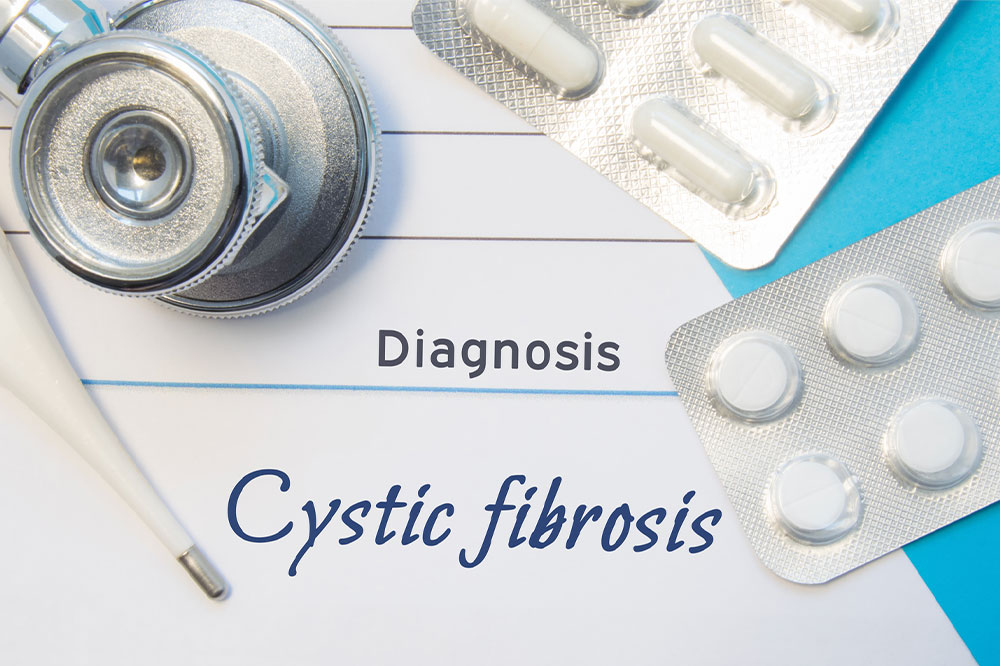Diagnosis & Treatment of Cystic Fibrosis
Diagnosis
There are several available methods of diagnosing cystic fibrosis. Prenatal testing is the first step towards calculating the risk for a child being born with cystic fibrosis. This type of testing is costly, so it is usually performed on only one parent to determine whether or not she or he is the carrier of the faulty CFTR gene. If the results show that the tested parent is the carrier, the other parent is tested also in order to determine the potential risk.

Other methods are used after birth and they involve screening of the newborn babies, blood tests genetic tests, and a sweat test. In many countries, the routine screening of the newly born babies is carried out. The screening involves a blood test in which the increased levels of immunoreactive trypsinogen (IRT) are looked for in the sample as a sign of cystic fibrosis.Some genetic tests are aimed precisely at discovering the defects in the genes that are associated with cystic fibrosis. These tests are usually performed when other methods require additional support for the accurate and definite diagnose to be set.
Recommended Read: Signs & Symptoms of Cystic Fibrosis
Another common test is the sweat test. This test can be performed with young infants and it involves the introduction of a sweat-producing substance on a small portion of the child’s skin. Sampling the sweat enables the doctors to determine if the salt levels in the sweat are higher than normal.Older children and even adults should get tested too. If any of previously described symptoms exist and are not explained by a different diagnosis, testing for cystic fibrosis should be done. It is not too rare that a milder manifestation of the disease is present in older individuals or that the symptoms of cystic fibrosis begin to appear later in life.
Treatment
No known cure for cystic fibrosis exists today. The quality of life for people suffering from this disease is increased with the relieving of the symptoms. The focal points of all the treatments are the removal of mucus from the lungs, preventing and controlling infection, treating the intestinal blockage, and providing the proper nutrition.Early discovery of the disease is considered to be very important for the overall success of any treatment for cystic fibrosis. An aggressive approach to treating the condition is recommended, followed by careful monitoring. The methods used in treating cystic fibrosis include medications such as antibiotics, anti-inflammatory drugs, inhaled bronchodilators, oral pancreatic enzymes, and mucus-thinning medications. In addition physical therapy, pulmonary rehabilitation, and surgical procedures can be required.
Antibiotics are often regularly used for prevention and treatment of lung infections. Other medications such as anti-inflammatory and mucus-thinning drugs are used to lessen the swelling of the airways and facilitate the coughing out of the accumulated mucus.Chest therapy and certain breathing techniques are commonly used with the aim of loosening up the mucus in the lungs. Other activities and therapies that may be beneficial for the overall functioning of the lungs are used too. They may include increased physical activity, adequate nutrition, pulmonary therapy, and counseling. Oxygen therapy is advised in certain cases as well.
Recommended Read: Diagnosis & Treatment of Cystic Fibrosis
Some surgical procedures can contribute to reducing the severity of the symptoms. These include the endoscopic removal of built up mucus from the blocked airways, nasal polyp removal, bowel surgery to repair the intestinal blockage, and in very severe, life-threatening, cases lung transplant.Cystic fibrosis is a chronic disease for which there is no known cure yet. Although the average life expectancy has notably increased due to improved access to quality medical care and modern treatments, the quality of life for those affected by the condition largely remains dependent on the severity of the symptoms and the rate of success in managing them.
Overall, progressive developments in medical science have provided significantly better results in the treatment of cystic fibrosis over the course of just a few decades. For this reason, a strong hope remains that ongoing research will enable us to better understand and treat this disease in the not too distant future.